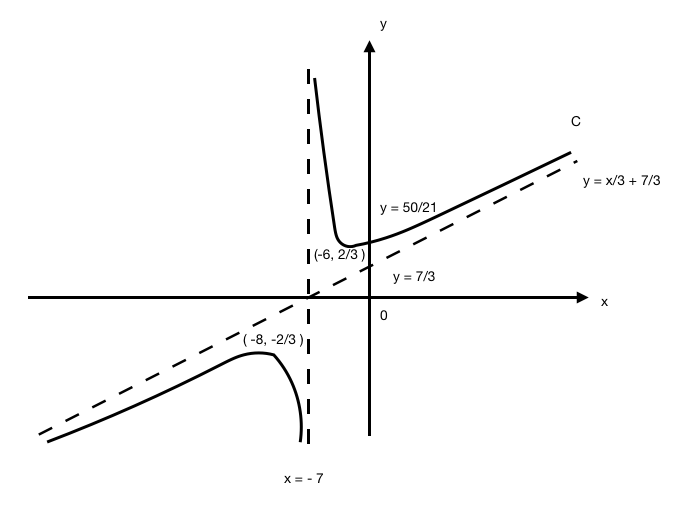Question 1
(i)
![]()
![]()
![]()
![]()
![]()
![]()
![]()
![]()
![]()
(ii)
Using long division, we find that
![]()
So the asymptotes are ![]() and
and ![]()
Question 2
(i)
![]()
![]()
![]()
![]()
![]()
![]()
This is a hyperbola with centre ![]() , asymptotes are
, asymptotes are ![]() , and vertices
, and vertices ![]() and
and ![]() .
.
![]() is a graph with asymptotes
is a graph with asymptotes ![]() and
and ![]() .
.
Use GC to plot.
(ii)
![]() —(1)
—(1)
![]() —(2)
—(2)
Subst (2) to (1),
![]()
![]()
![]()
![]()
![]()
(iii)
From graph, we observe two intersections. Thus, two roots.
Question 3
(ai)
![]()
![]()
![]()
![]()
![]()
![]()
![]()
(aii)
![]()
![]()
![]()
![]()
![]()
![]()
![]()
![]()
(bi)
![]()
![]()
Let ![]()
![]()
Let ![]()
![]()
![]()
(bii)
![]()
![]()
![]()
![]()
![]()
![]()
![]()
![]()
![]()
![]()
![]()
![]()
![]()
(biii)
As ![]() ,
, ![]() and
and ![]() , the sum of series tends to
, the sum of series tends to ![]() , a constant. Thus, series is convergent.
, a constant. Thus, series is convergent.
(biv)
![]()
Replace ![]() by
by ![]() . Then we have
. Then we have
![]()
![]()
![]()
![]()


